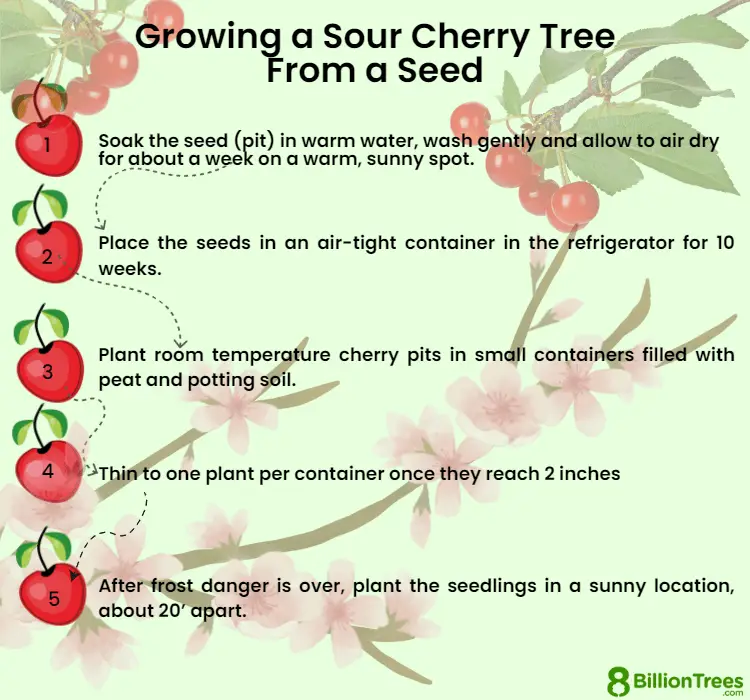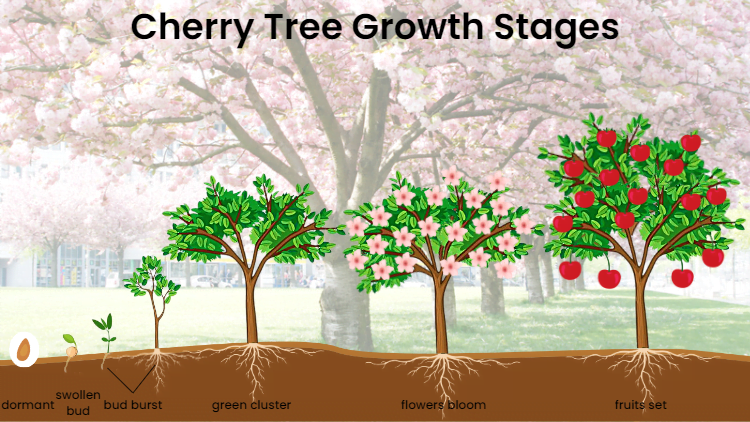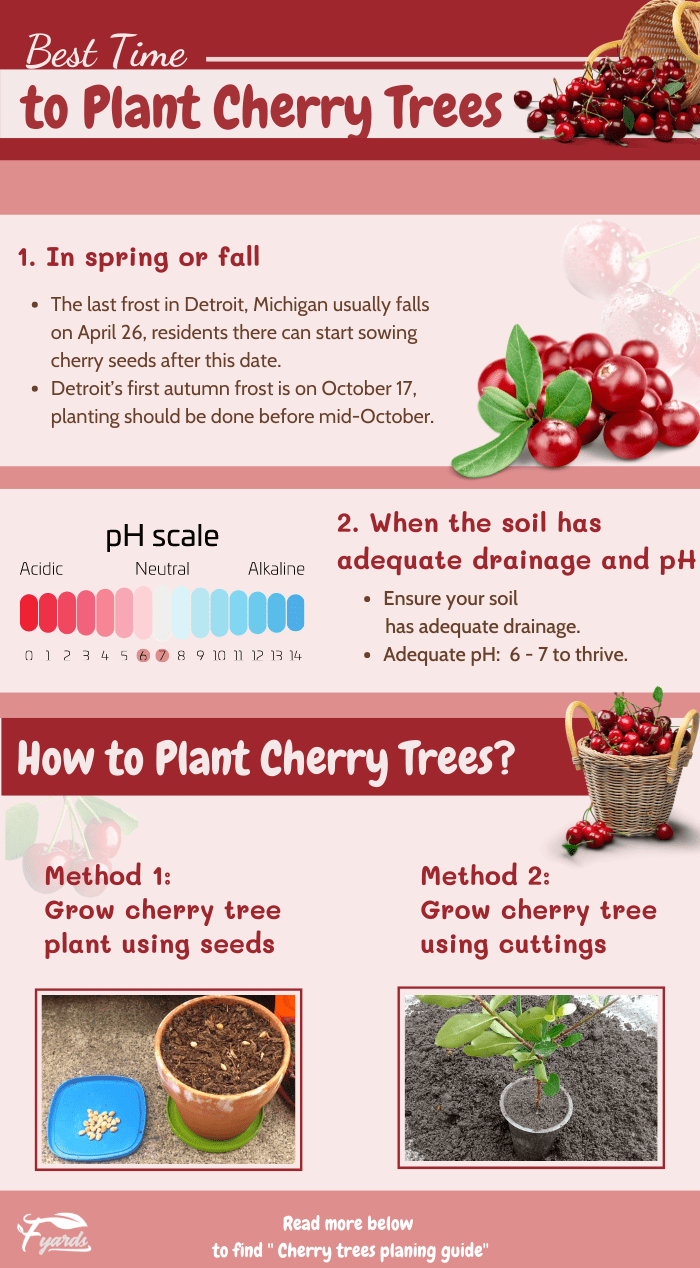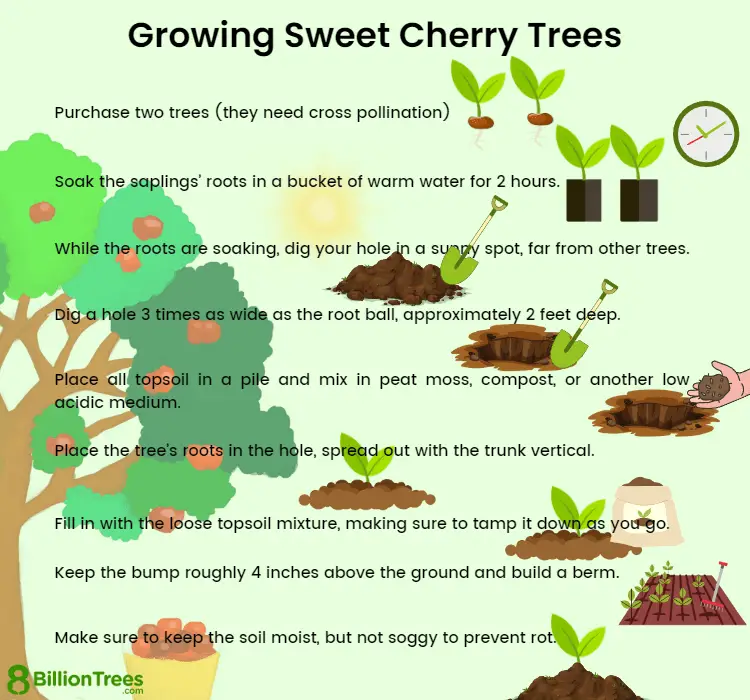You’ve always dreamed of having your own cherry tree in your backyard, and now that dream can become a reality with these 7 simple steps to successfully grow cherries from seed. From selecting the right seed to providing the ideal growing conditions, this article will guide you through the entire process of nurturing your cherry tree from a tiny seedling to a fruitful bearer of delicious cherries. Get ready to embark on your cherry-growing journey and watch your garden flourish with this step-by-step guide.

Preparing the Seeds
Selecting the Cherries
Before you can start growing cherries from seed, it’s important to choose the right cherries to harvest the seeds from. Look for healthy, ripe cherries that are free from any signs of disease or pests. Select cherries that are from a variety that you enjoy and that is well-suited to your specific climate. Remember, the quality of the cherries you choose will directly impact the quality of the trees you grow from the seeds.
Extracting the Seeds
Once you have selected your cherries, it’s time to extract the seeds from the fruit. Start by cutting open the cherries and removing the flesh around the pit. This can be done with a knife or by using your hands to gently separate the flesh from the pit. Make sure to handle the seeds with care to avoid damaging them.
Washing and Drying the Seeds
After you have extracted the seeds, it’s important to clean them thoroughly to remove any traces of fruit flesh. Rinse the seeds under cool water and gently rub them to remove any remaining pulp. Once washed, lay the seeds on a paper towel or a clean, dry surface to air dry. It’s important to allow the seeds to dry completely before moving on to the next step.
Stratifying the Seeds
Understanding the Importance of Stratification
Stratification is a process that mimics the natural winter conditions that cherry seeds require to germinate. It involves exposing the seeds to a period of cold, moist conditions to break their dormancy and stimulate germination. Stratifying the seeds is essential to ensure successful germination and healthy tree growth.
Warm Stratification Method
If you live in a region with mild winters, you can opt for a warm stratification method. Start by moistening a paper towel and placing the seeds on one half of the towel. Fold the towel in half, covering the seeds, and place them in a sealable plastic bag. Store the bag in a warm location, such as on top of a warm appliance, for about 8-10 weeks. This will simulate the warmer temperatures of spring and trigger the seeds to germinate.
Cold Stratification Method
For those who live in regions with colder winters, cold stratification is the preferred method. After cleaning and drying the seeds, place them in a sealable plastic bag or a container filled with slightly damp peat moss or vermiculite. Seal the bag or container and store it in the refrigerator for approximately 8-10 weeks. The cold temperatures will break the seed dormancy and prepare them for germination.

Germinating the Seeds
Soaking the Seeds
Once the stratification period is complete, it’s time to soak the seeds to encourage germination. Fill a bowl with room temperature water and place the seeds in the water. Allow them to soak for 24-48 hours, changing the water every few hours. This will help soften the seed coat and promote germination.
Planting the Seeds
After soaking, it’s time to plant the seeds in suitable growing containers. Fill the containers with well-draining potting soil and make a small hole in the center using your finger or a pencil. Place one seed in each hole and cover it with soil, gently pressing it down. Water the soil gently to ensure it is moist.
Providing Proper Light and Temperature
To facilitate successful germination, it is important to provide the seeds with adequate light and temperature. Place the containers in a warm location where they can receive indirect sunlight. Maintain a temperature in the range of 65-75°F (18-24°C) to create optimal conditions for germination. Keep the soil consistently moist but avoid overwatering, as this can lead to rotting.
Transplanting the Seedlings
Choosing a Suitable Outdoor Location
Once the seedlings have developed a few sets of true leaves, they are ready to be transplanted outdoors. Choose a suitable location in your garden that receives full sun and has well-draining soil. Consider the mature size of cherry trees and provide enough space for them to grow and thrive.
Preparing the Soil
Prepare the soil in the chosen location by removing any weeds or grass and loosening it with a garden fork or shovel. Incorporate organic matter, such as compost or well-rotted manure, to enrich the soil and improve its fertility. This will provide the young cherry trees with the necessary nutrients for healthy growth.
Transplanting the Seedlings
Dig a hole in the prepared soil that is deep and wide enough to accommodate the seedlings’ root balls. Carefully remove the seedlings from their containers, being mindful not to damage the delicate roots. Place each seedling in a hole, ensuring that it is level with the surrounding soil. Gently backfill the hole, firming the soil around the base of the seedling. Water the newly transplanted seedlings thoroughly to help settle the soil.

Caring for the Cherry Trees
Watering
Proper watering is crucial for the healthy growth of cherry trees. Keep the soil evenly moist but not waterlogged. Water deeply at the base of the tree, rather than sprinkling the leaves. During hot, dry periods, increase the frequency of watering to prevent water stress and ensure the trees’ vitality.
Fertilizing
Cherry trees benefit from regular fertilization to encourage robust growth and abundant fruiting. Apply a balanced, slow-release fertilizer in early spring, following the manufacturer’s instructions. Additionally, supplement with organic matter, such as compost or well-rotted manure, around the base of the trees to provide additional nutrients throughout the growing season.
Pruning
Pruning is an essential aspect of cherry tree care as it helps maintain their shape, promotes airflow, and encourages healthy fruiting. Prune in late winter or early spring before new growth emerges. Remove any dead, damaged, or diseased branches. Thin out crowded branches to improve light penetration. Additionally, prune to maintain the tree’s desired shape and height.
Protecting from Pests and Diseases
Identifying Common Pests
Cherry trees can be susceptible to various pests, such as aphids, cherry fruit flies, and cherry slugs. Regularly inspect your trees for any signs of pest infestation, including curling leaves, sticky residue on leaves or fruit, or holes in the fruit. Identifying the specific pests affecting your trees will help you choose the most appropriate control methods.
Preventing Pest Infestation
Implement preventive measures to reduce the risk of pest infestation. These can include applying organic or chemical insecticides, using sticky traps, and practicing proper sanitation by removing fallen fruit and debris from the area around the trees. Encourage beneficial insects, such as ladybugs and lacewings, that naturally control pests by providing native plants and avoiding broad-spectrum pesticides.
Dealing with Common Diseases
Cherry trees can be susceptible to diseases like cherry leaf spot, brown rot, and bacterial canker. Regularly inspect your trees for symptoms such as spots or holes on the leaves, moldy fruit, or oozing cankers on branches. If you notice any signs of disease, promptly remove and destroy the affected plant parts. Additionally, use appropriate fungicides or other control methods recommended for specific diseases.

Harvesting Cherries
Knowing When the Cherries are Ready
When the cherries have reached their full maturity, they will become plump, firm, and develop their characteristic color. Depending on the variety, cherries typically ripen in late spring or early summer. Taste a few cherries to determine if they have reached the desired sweetness level before harvesting the entire crop.
Harvesting Techniques
To harvest cherries, gently grasp the stem of each ripe cherry and give it a slight twist. The cherries should come off easily in your hand. Be careful not to squeeze or forcefully pull the fruit, as this can damage both the cherries and the tree. Place harvested cherries in a basket or container, taking care not to overcrowd or crush them.
Storage and Preservation
To enjoy your cherries for a longer period, it’s essential to store them properly. Place the harvested cherries in a cool location, such as a refrigerator, to extend their shelf life. If you have a large harvest, consider freezing or canning the cherries to preserve them for later use. Follow proper preservation methods and guidelines to ensure the best results.
Common Challenges and Solutions
Slow Germination
If your cherry seeds are taking longer than expected to germinate, check that the temperature and moisture levels are appropriate for the specific method you are using. Adjust the conditions accordingly and be patient, as cherry seeds can sometimes take several weeks to germinate.
Poor Growth
If your cherry trees are showing signs of poor growth, there may be several factors at play. Check that they are receiving adequate sunlight, proper watering, and suitable soil conditions. Consider testing the soil pH and nutrient levels to ensure they are within the optimal range for cherry tree growth. If necessary, amend the soil and provide additional care to help the trees thrive.
Climate Adaptation
Cherries are best suited to specific climate zones, and not all varieties will thrive in every region. Before growing cherry trees, research the climate requirements of the particular variety you are interested in. If you live in a region with a less-than-ideal climate, consider choosing cherry varieties that are known for their adaptability or consider modifications, such as protective coverings or greenhouses, to create a microclimate for successful growth.

Celebrating the Fruitful Results
Enjoying the First Harvest
After all the hard work and care, the moment of joy arrives when you can finally taste the fruits of your labor. Enjoy the first harvest of your cherries by savoring their fresh sweetness straight from the tree. Share the experience with friends and family, and revel in the satisfaction of growing cherries from seed to table.
Sharing the Delicious Bounty
If you have an abundant harvest, consider sharing the bounty with others. Cherries make wonderful gifts, and your friends, neighbors, and community will appreciate the delicious, homegrown treat. Share your knowledge and experiences with others who may be interested in growing cherries themselves, fostering a sense of community and connection.
Continuing the Legacy
Growing cherry trees from seed is not only a rewarding activity, but it also allows you to continue the legacy of these beautiful and delicious fruit-bearing trees. As your cherry trees grow and mature, they will provide shade, beauty, and an ongoing source of fresh cherries for years to come. Pass on your wisdom and passion for gardening to future generations, ensuring that the tradition of growing cherries from seed lives on.
Conclusion
Growing cherries from seed is a journey of patience, nurturing, and celebration. By carefully selecting, preparing, and germinating your cherry seeds, you can embark on a fulfilling adventure that will reward you with bountiful harvests and a thriving garden. Through proper care, protection from pests and diseases, and appropriate harvesting techniques, you can enjoy the beauty and deliciousness of cherries while sharing the fruits of your labor with others. So roll up your sleeves, gather your supplies, and start growing your very own cherry trees from seed today!



